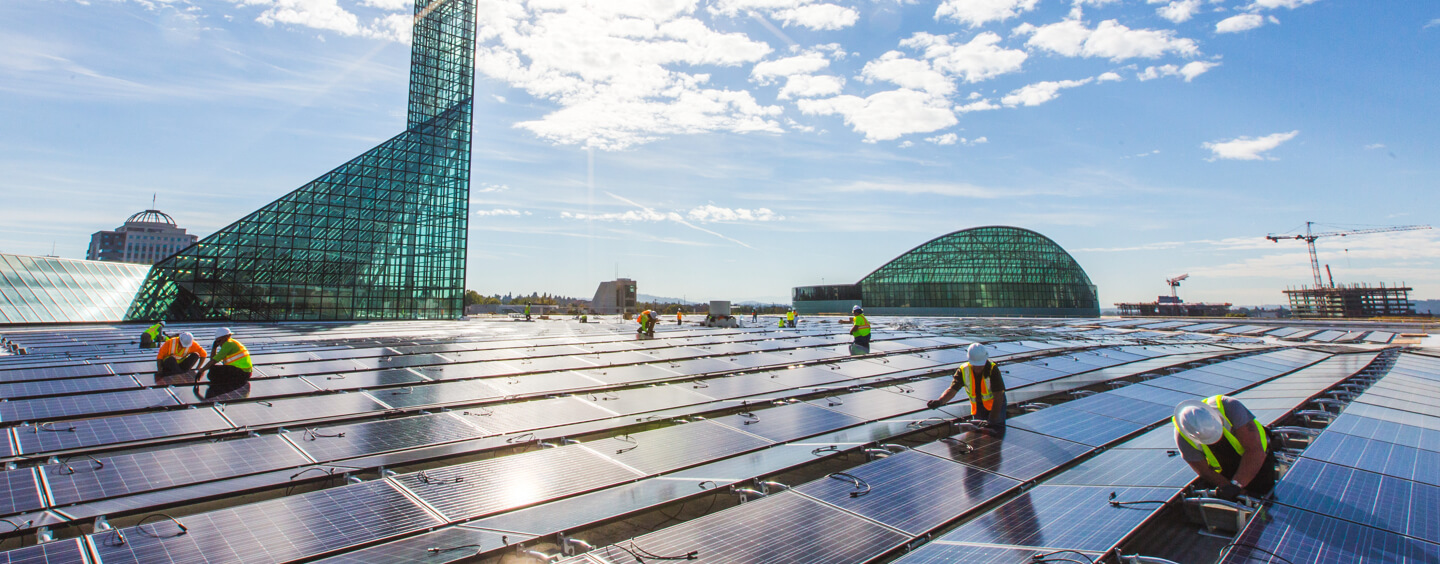How Sustainable Tech Is Changing the World
July 15, 2019 | Blog | No Comments

Can the environment and a thriving economy co-exist? Through sustainable tech innovation, Yair Crane has no doubt they can.
As Principal of CTG Consulting, Yair offers strategic counsel and services for implementing clean energy and clean transportation technologies to businesses and government agencies in the Southern California region.
I recently spoke with Yair at a Young Professionals in Energy event, a networking group he co-leads, to discuss the state of the sustainable technology industry.
“Most companies want to do the right thing when it comes to sustainability,” Yair said. “It’s just a matter of bandwidth and budget.”
He said several factors are currently driving adoption of solar energy by companies, including local and state government policies, increased peak-demand energy rates, and the advent of affordable, onsite solar and energy storage technology.
Investor-owned utilities recently increased both the pricing and timing of peak energy rates for commercial businesses, he said, extending peak time of use rates (TOUs) well after regular work hours until 9 p.m., directly impacting the energy bills of commercial customers small and large.
“If you’re a large retailer like Whole Foods or a CVS, it’s a growing expense,” Yair said. “Retail stores, movie theaters, fitness centers – they can’t change their hours. People are going to come in after work. That’s their busiest time.”
That’s why most of Yair’s work is currently focused on helping firms achieve ‘peak clipping’ through solar energy generation complemented by battery storage. His firm analyzes a company’s energy bills then works with a solar partner and a battery storage manufacturer to design a system that reduces peak demand costs.
When completed, energy from solar panels is stored onsite in advanced battery systems. During peak demand hours, a building’s energy is drawn from the solar-charged batteries rather than from the grid. Even if the solar energy is only a percentage of the total energy use, it’s enough to lower peak demand costs, and can lead to a return on investment in as little as 18 months in some service areas.
Solar energy storage is being adopted across sectors in Southern California, Yair said. Ports like the Port of Los Angeles in San Pedro and the Port of Long Beach are implementing solar energy and battery storage for on-site generation and for added resiliency to their terminal operations. The two ports have been gradually meeting their emissions reduction goals defined in their joint Clear Air Action Plans, including reducing the emissions of ships while they are docked by plugging into on-shore or on-dock power.
In addition, biotech companies that require reliable power 24×7 are using solar energy and battery storage to support mission-critical portions of their operations. Even microbreweries and car dealerships are exploring the technology, he said.
Yair sees many innovative companies rapidly commercializing their clean technology solutions, including:
- NantEnergy, which has created a rechargeable zinc-air battery storage system that it says can provide power at a lower cost than lithium-ion batteries and with longer life. Its systems already are being used in commercial energy management, remote microgrids, and as reliable backup power to critical telecom infrastructure. The firm is currently building a factory in El Segundo, Calif. that will produce its zinc air and lithium hybrid storage solution.
- Newlight Technologies in Irvine, Calif. has found a way to recycle methane and carbon emissions produced by landfills and other sources into a bioplastic that can serve as a substitute for petroleum-based plastic. It has partnered with IKEA to create chairs and other furniture and is currently ramping up production.
- Soon, electric vehicles will not only draw energy from the grid but serve as mobile sources of power back to the grid as well as to homes and commercial buildings as backup during outages. This “vehicle-to-grid” (V2G) model is exemplified by San Diego-based Nuvve.
Yair believes sustainable energy technology goes together with economic growth and success. The need for local workers to install systems and retrofit buildings also ensures that jobs are kept in the U.S.
“There is a way to thrive and not just survive in California and other states where more sustainable or green policies are being enacted,” Yair said. “Local governments, community choice aggregations or CCAs, and utilities aren’t waiting for federal action to make clean energy come to pass.”


